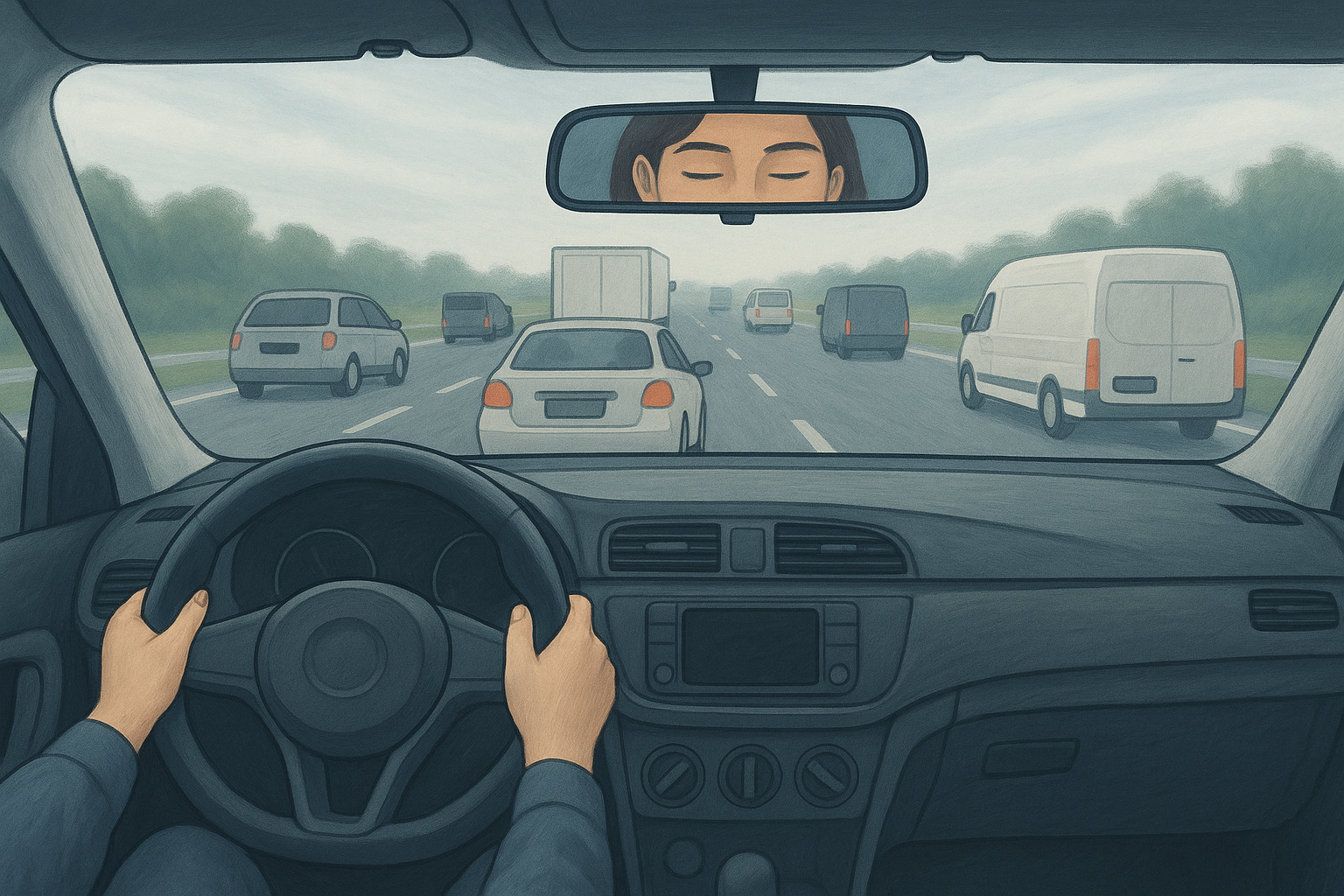III – Driver Under Strain (Traffic Flow vs Inner Stream)

Series: Road Without Signs — On the Psychology of Movement in a World Increasingly Governed by Others
There are drives that take us home — and drives that return us to ourselves.
Sometimes, just when we seem calmest at the wheel, what’s happening inside is most intense.
Our hands grip the steering wheel steadily, yet our thoughts race ahead. Or trail behind. Sometimes they circle.
One can travel miles without noticing the road — but noticing the burden one carries.
Traffic flow is what everyone sees. But there’s another flow — an inner stream. And it rarely obeys traffic rules.
There are no traffic lights to regulate thoughts, no warning signs for emotional potholes.
There is only a serene expression and one rearview mirror — in which, sometimes, a figure appears that no longer resembles who we were yesterday. Or, for a moment, reminds us of someone we set aside along the way.
And precisely then, in that space between control and an inner calling — the real journey begins. Not the one that takes us to someone else, but the one that takes us to ourselves.
The Road as an Inner Stream
When someone says, “I drove and didn’t even notice the road,” it’s often not just a sign of fatigue. It’s the moment when the inner stream of thought prevails over external reality.
One’s gaze is ahead, but attention hovers between past and future.
The vehicle moves forward — yet something entirely different unfolds within: negotiations with oneself, unresolved conversations, imagined responses.
In that sense, the path we drive parallels the path our thoughts take. It reflects our emotional state and is often chosen subconsciously.
That’s why the routes we choose aren’t always the shortest — but the ones most comforting to our psyche.
Some always take the detour, not just to avoid traffic — but to avoid encounter. With the place. With the person. With the truth.
Thus, the road becomes a continuation of our inner dynamics — it doesn’t just take us somewhere, but through something.
The Space in Motion
For many, driving is the only moment of the day when they feel true autonomy.
All decisions are self-made: speed, direction, tempo — even the rhythm of one’s breath.
No interruptions. No arguments. No corrections. The steering wheel in one’s hands is not merely a technical tool — it is a symbol of mastering life, even if only for those thirty minutes.
Yet, research shows that this very space — in which we feel free and independent — can also be the most stressful: drivers experience significantly higher levels of stress during daily commutes than those taking public transport or walking.
Within this moving space, many establish their own set of rules.
Some use it to rest. Others—to dominate.
Some slow down. Others speed up.
Some become more empathetic and patient than outside the vehicle — others harsher, more vindictive, less tolerant.
The driver becomes a micro-ruler of their moving domain. And in that role, there is no neutrality — every choice reveals something.
- Do you use your advantage to help others — or to punish them?
- Do you assert control — or do you cooperate?
- Do you respect the weaker road user — the pedestrian, the cyclist, the novice?
The vehicle reveals not just where you’re going—but who you are when nobody is watching.
And sometimes, when driving alone for a long stretch, you start to notice a sense of absence more than a presence.
When the Algorithm Takes the Wheel
But — what happens when the steering wheel no longer seeks our hand?
When it is no decision, but code, that drives us?
Research shows that drivers with more dominant personalities feel increased discomfort and anxiety interacting with autonomous vehicles — because autonomous systems don’t participate in the “traffic dialogue” the way humans do.
At the same time, statistics show that autonomous systems are significantly safer:
- In testing by Waymo, autonomous vehicles recorded 88% fewer serious injury or worse crashes compared to human-driven vehicles.
- Also, injury-causing crashes were reduced by 78%.
Yet the human still feels less secure — because it’s not them who decides.
Regardless of statistics, the loss of control creates inner resistance — psychological, and often philosophical.
It’s not easy to relinquish the wheel — neither the literal one, nor the symbolic. Especially when, for years, controlling everything felt like the only way to stay afloat.
What's Next in the Series?
What happens to our identity when we no longer drive — but merely accompany movement?
In the next installment of Road Without Signs — On the Psychology of Movement in a World Increasingly Governed by Others, we explore the transition from manual control to algorithmic functions — and the internal resistance that this shift provokes.
Perhaps, we’ll touch on the question that many postpone: what happens when you realize that your next destination is the decision to stop controlling everything?
